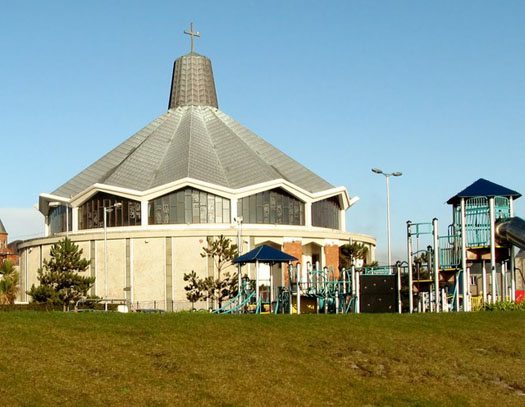
June 26, 2017; National Public Radio
On Monday, the Supreme Court issued a number of decisions that will have long-term implications. Not least among them was the seemingly simple ruling to allow the state of Missouri to give Trinity Lutheran Church in Columbia a grant to rubberize its playground surface using discarded tires.
Written regulations in Missouri and 36 other states bar state grants to religious institutions. These provisions are broadly known as Blaine Amendments. As speaker of the House of Representatives, James G. Blaine proposed a U.S. Constitutional amendment in 1875 prohibiting states from funding religious education. That proposed amendment failed, but it led many states, including Missouri, to pass their own versions. With this decision, that could change.
The 7–2 ruling included the Court’s conservative justices, who were joined by Justices Kagan and Breyer. Writing for the majority, Chief Justice John Roberts stated, “The consequence is, in all likelihood, a few extra scraped knees. But the exclusion of Trinity Lutheran from a public benefit for which it is otherwise qualified, solely because it is a church, is odious to our Constitution all the same, and cannot stand.”
In a passionate and blistering dissent, Judge Sonia Sotomayor, who was joined by Justice Ginsburg, wrote, “If this separation means anything, it means that the government cannot, or at the very least need not, tax its citizens and turn that money over to houses of worship. The Court today blinds itself to the outcome this history requires and leads us instead to a place where separation of church and state is a constitutional slogan, not a constitutional commitment.”
With the addition of Judge Neil Gorsuch to the Court, this outcome was not unexpected. In some ways, this particular case was moot, as the new Republican governor of Missouri, Eric Greitens, announced just before the April arguments that he was reversing the policy that had denied the church application in 2012 and that churches were now eligible to participate. Due to this change, the case was argued by a private attorney, rather than by the state of Missouri.
So why all the handwringing over making children safer on a playground? Those who are vigilant about the constitution’s First Amendment mandate forbidding “an establishment of religion” view this as a “slippery slope” toward breaking down the “wall of separation” articulated by Thomas Jefferson in an 1802 letter to the Danbury Baptist Association. While strong words were written by both Roberts and Sotomayor, it is Footnote 3, which Roberts wrote, that is key. In this footnote, the Chief Justice said, “This case involves express discrimination based on religious identity with respect to playground resurfacing. We do not address religious uses of funding or other forms of discrimination.”
Sign up for our free newsletters
Subscribe to NPQ's newsletters to have our top stories delivered directly to your inbox.
By signing up, you agree to our privacy policy and terms of use, and to receive messages from NPQ and our partners.
The intent, it would seem, was to keep this ruling narrow and focused only on this case. But Justices Thomas and Gorsuch refused to sign on to the footnote. Justice Gorsuch went so far as to dissent from it. Gorsuch explained his objection to Footnote 3 in a concurrence joined by Thomas.
The footnote “is entirely correct,” Gorsuch said, but he worries that it may mistakenly read to suggest that only certain cases—such as those involving playground resurfacing, or children’s safety, or some or social good—are governed by the Trinity Lutheran decision. “The general principles here do not permit discrimination against religious exercise—whether on the playground or anywhere else,” he wrote.
And so, the door has been opened for further blurring of the lines between church and state. Justice Gorsuch’s statement has elevated “religious exercise” beyond the use of scrap tires for children’s safety.
In her dissent, Sotomayor also said the case was about more than simply resurfacing a playground. “The stakes are higher,” she wrote. “This case is about nothing less than the relationship between religious institutions and the civil government—that is, between church and state. The court today profoundly changes that relationship by holding, for the first time, that the Constitution requires the government to provide public funds directly to a church.”
This is the first time that the Supreme Court has required that a state government provide public monies directly to a church. While Monday’s decision involves a small grant program for playground resurfacing, the repercussions will send ripples through public and parochial school programs across the country. As Justice Gorsuch stated, “After all, that Clause guarantees the free exercise of religion, not just the right to inward belief (or status).” He argues that religious actions need protections from discrimination, even when they affect the rights of others.
Justice Sotomayor clearly disagreed—so much so that she chose to end her dissent in this case not with the traditional “I respectfully dissent,” but rather with an emphatic “I dissent.”
The wall that separates religion and the state now seems to have a crack in it. We can expect to see future cases that will seek to widen that opening. The consequences are many, and both sides of this issue are girding for the next battle.—Carole Levine













